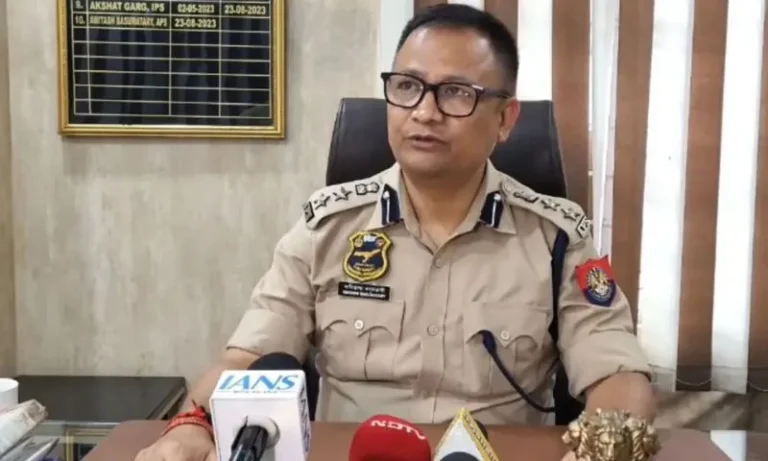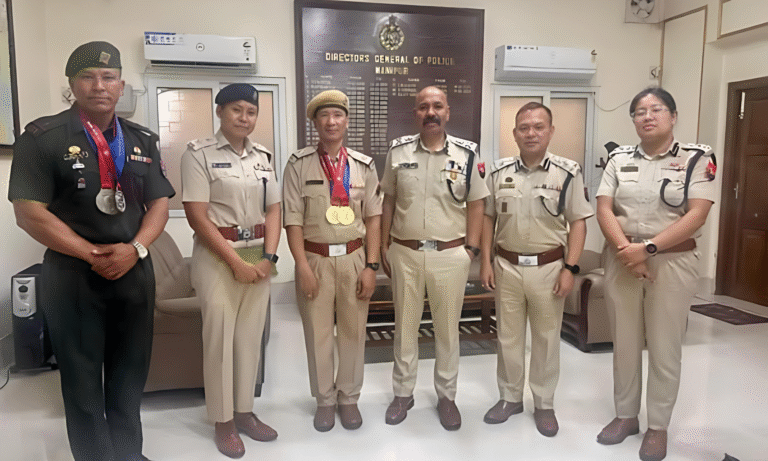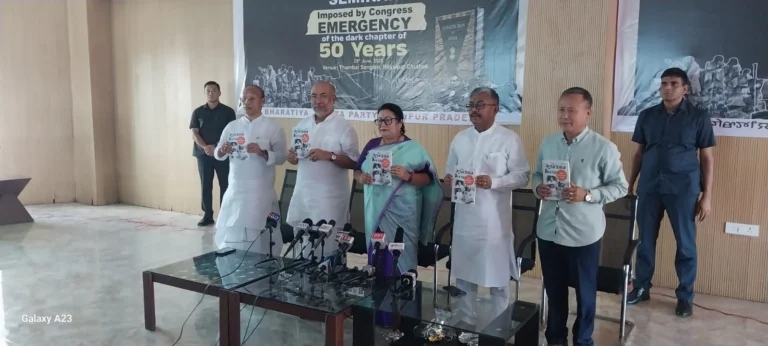Manipur: Two Insurgents’ Camps Destroyed, Arms Recovered – A Significant Blow to Insurgent Operations
Summary
In a decisive operation that underscores the determination of local security forces, authorities in Manipur have successfully destroyed two insurgent camps and recovered a substantial cache of arms. This action, which disrupted the operational capabilities of militant groups in the region, marks a critical step in the ongoing fight against insurgency. The operation not only dismantles the immediate threat but also sends a stern message that illegal armed activities will face relentless scrutiny and action.
Long Article
Introduction
Have you ever wondered what it takes to dismantle an insurgent network in a region where every day can feel like a battle for peace? In Manipur, a recent operation by security forces has shown just that. Two insurgent camps were obliterated, and a significant stockpile of arms was recovered—a bold move aimed at curbing militant activities once and for all. In this article, we dive deep into the details of this operation, exploring its background, the challenges faced, and the long-term implications for regional security. Grab a cup of coffee and join me as we unpack this major development in Manipur’s fight against insurgency.
The Context of Insurgency in Manipur
A Glimpse into Manipur’s Turbulent Past
Manipur has long been a hotbed for insurgency, with militant groups operating in the shadows for decades. These groups, driven by a mix of political, ethnic, and economic motives, have often resorted to violent methods to challenge the status quo. Over time, their activities have ranged from targeted attacks on security forces to systematic extortion and arms smuggling. Such persistent instability has not only affected the local populace but has also hindered economic development and peace initiatives in the region.
Imagine living in a place where fear and uncertainty are part of daily life—where the threat of violence is never far away. That’s the reality for many in Manipur, and it is this backdrop that makes recent operations like the destruction of insurgent camps so crucial.
Militant Tactics and Their Impact
Insurgent groups in Manipur have mastered a range of tactics that allow them to remain elusive. They often set up covert camps deep in difficult terrain, stockpiling arms and ammunition to maintain a constant state of readiness. These camps serve as both operational bases and safe havens where militants can plan and execute attacks. The recovered arms from these camps could have been used to fuel further violence, spread terror, and challenge the authority of the state.
By targeting these bases, security forces are not just removing a physical threat—they’re striking at the very heart of the insurgents’ operational capabilities.
Details of the Operation: How It Unfolded
Intelligence: The Key to Success
Before any action was taken, extensive intelligence gathering played a pivotal role. Law enforcement agencies relied on a combination of human intelligence, digital surveillance, and local informants. This multi-layered approach ensured that the location of the insurgent camps was accurately pinpointed. It’s like solving a massive jigsaw puzzle where every piece of information, no matter how small, eventually comes together to reveal the full picture.
The intelligence gathered not only identified the camps but also detailed the type and quantity of arms stored. This allowed the security forces to plan a precise operation that minimized risk to civilians and maximized the chance of a successful raid.
The Tactical Execution
On the day of the operation, the element of surprise was crucial. Security forces, including specialized counter-insurgency units, mobilized quickly. Here’s a step-by-step look at what happened:
- Rapid Deployment:
Under the cover of darkness, teams advanced toward the suspected locations. The use of night-vision equipment and silent communication methods ensured that the militants remained unaware of the impending raid. - Securing the Perimeter:
Once on-site, officers quickly established a secure perimeter. This move prevented any potential escape and ensured that the operation could proceed without external interference. - Swift Infiltration:
The teams split into smaller units, each tasked with clearing specific sections of the camp. Their coordinated efforts left little room for error, and within a short span, the entire area was under control. - Arm Recovery and Evidence Collection:
As the teams combed through the camps, they recovered a significant number of arms—ranging from small arms to heavier weaponry—and crucial documents. These documents, including communication logs and financial records, provided further insights into the operations of the insurgent network. - Arrest and Detainment:
Alongside the destruction of the camps, a few low-level operatives were apprehended. Their capture not only aided in disrupting the insurgent activities but also provided valuable leads for further investigations.
Technology and Innovation in Action
Modern warfare and counter-insurgency are as much about technology as they are about bravery. The operation benefited immensely from advanced technological tools such as:
- Drone Surveillance:
Drones provided real-time aerial views, helping officers navigate the challenging terrain and monitor the camps from a safe distance. - Digital Forensics:
Analyzing recovered digital devices allowed investigators to trace the communication channels used by militants, further unraveling the network’s structure. - GPS Tracking:
GPS devices enabled precise location mapping, ensuring that the teams knew exactly where to go and which areas to secure.
These technological advancements are like having a digital magnifying glass that reveals hidden details that would otherwise remain invisible.
The Strategic Significance of the Operation
Weakening the Insurgent Network
Destroying insurgent camps and seizing their arms have a profound impact on the operational capabilities of militant groups. By stripping them of their resources, security forces effectively disrupt the planning and execution of future attacks. It’s akin to removing the battery from a remote-controlled car—it simply won’t function.
The recovered arms, which could have been used in violent confrontations, are now out of circulation. This not only hampers the militants’ ability to launch further assaults but also boosts the morale of law enforcement and the general public.
Sending a Message to Potential Recruits
Insurgency thrives on the promise of power and the allure of a secretive, underground network. When news spreads that insurgent camps are being systematically dismantled, it sends a clear message to would-be recruits: the risks far outweigh the rewards. This can have a long-term deterrent effect, discouraging others from joining these groups.
Imagine a defunct factory—the once-thriving hub of activity is now just an abandoned shell. Similarly, the destruction of these camps undermines the organizational structure of militant groups, making them less attractive to new members.
Restoring Public Confidence
For the people of Manipur, such operations are a breath of fresh air. When security forces take decisive action, it reinforces the belief that the state is committed to protecting its citizens. This renewed confidence can lead to increased cooperation between the community and law enforcement, creating a virtuous cycle of trust and safety.
Public confidence is like the foundation of a building; if it’s strong, the entire structure stands firm against external pressures. With every successful operation, the trust between the community and the state grows stronger.
Community Impact: Beyond the Tactical Success
Economic and Social Upliftment
Insurgent activities, especially those involving arms smuggling and violence, have far-reaching consequences beyond immediate security concerns. They often disrupt local economies, deter investments, and create an atmosphere of fear that stifles development. With the dismantling of these insurgent camps, there’s potential for economic revitalization. Local businesses can thrive without the constant threat of violence, and investors may find the region more attractive for development projects.
Imagine a garden that’s been overrun by weeds—when you clear those weeds, the flowers can finally bloom. Similarly, with insurgent elements removed, Manipur has the chance to flourish economically and socially.
Empowering Local Communities
Operations like these serve as a rallying point for local communities. When people see that their hard work and daily lives are being safeguarded, it fosters a sense of empowerment and collective responsibility. Community members are more likely to participate in neighborhood watch programs, support local governance, and actively report suspicious activities.
This collective vigilance is essential in building long-term resilience against insurgency. It transforms the community from passive observers into active partners in maintaining peace.
Psychological Impact
The psychological toll of living under constant threat is immeasurable. Fear, anxiety, and uncertainty can cripple communities, affecting everything from children’s education to daily business operations. The destruction of insurgent camps not only removes a physical threat but also alleviates a significant mental burden. It reassures residents that the state is capable of protecting them, thereby improving the overall quality of life.
Think of it as a weight being lifted off your shoulders—when you know you’re safe, you can finally relax and focus on building a better future.
Challenges That Remain
Evolving Tactics of Militants
Even with such a successful operation, the battle against insurgency is far from over. Militants are known for their ability to adapt and evolve. Today’s operation is a significant setback, but insurgents may regroup, adopt new tactics, and try again. This cat-and-mouse game requires constant vigilance and innovation from security forces.
To stay ahead, law enforcement must continually invest in technology, training, and intelligence gathering. It’s a dynamic environment where yesterday’s solution might not work for tomorrow’s challenge.
Geographical and Logistical Hurdles
Manipur’s unique geography—characterized by dense forests, hilly terrains, and remote border areas—presents logistical challenges. Insurgent groups often exploit these natural features to hide and move undetected. Even with advanced technology like drones and GPS, navigating these terrains remains a formidable task.
Overcoming these challenges requires not just technological solutions but also strong local knowledge and robust community networks. The cooperation of local residents, who understand the terrain better than anyone, is invaluable in such operations.
Need for Continuous Community Engagement
While recent successes are encouraging, maintaining long-term community engagement is vital. The fear instilled by years of insurgency doesn’t vanish overnight. Continuous dialogue, transparency in operations, and demonstrable efforts to improve public safety are key to building lasting trust. Law enforcement agencies must work hand in hand with community leaders to address concerns and ensure that progress is sustainable.
Future Prospects: Strengthening the Fight Against Insurgency
Investing in Next-Generation Technology
The future of counter-insurgency lies in leveraging next-generation technology. Imagine a scenario where artificial intelligence helps predict militant movements, where drones provide 24/7 surveillance, and where digital forensics can unravel complex criminal networks in real time. Such innovations can revolutionize how operations are conducted, making them more efficient and less risky.
Security agencies in Manipur are already exploring these possibilities, and with continued investment, they can stay several steps ahead of insurgents.
Enhanced Training and Capacity Building
Continuous training is the cornerstone of effective law enforcement. Regular workshops, simulation exercises, and inter-agency training sessions can ensure that officers are always prepared for any eventuality. With better-equipped and well-trained personnel, operations become smoother and more effective.
Fostering Regional and International Cooperation
Insurgency does not respect borders. Militants often find safe havens across national boundaries, making regional and international cooperation crucial. By strengthening ties with neighboring countries and sharing intelligence, security forces can close gaps that militants might exploit. This collaborative approach can lead to coordinated operations that disrupt insurgent networks on a larger scale.
Legislative Reforms and Policy Support
Effective action against insurgency also requires robust legislative support. Policymakers must continually update laws to address emerging challenges—be it cyber-enabled insurgency or the use of sophisticated communication technologies by militants. Faster judicial processes and tougher penalties for insurgent activities can serve as strong deterrents.
A Glimpse into the Future: Hope on the Horizon
The destruction of insurgent camps and the recovery of arms in Manipur is more than just a tactical victory—it’s a step toward a brighter, safer future. Every operation that successfully disrupts militant networks paves the way for stability and development. When security is restored, communities can focus on rebuilding, investing, and creating a thriving local economy.
The road ahead may still be challenging, but this operation stands as a testament to what can be achieved with determination, modern technology, and community collaboration. The hope is that these successes will inspire further efforts, eventually leading to lasting peace in the region.
Conclusion
The recent destruction of two insurgent camps in Manipur and the recovery of arms represent a watershed moment in the ongoing battle against insurgency. By striking at the operational bases of militant groups, security forces have not only removed dangerous weaponry from the streets but have also dealt a severe blow to the insurgents’ ability to fund and execute their plans. This operation, marked by precision, advanced technology, and effective community cooperation, signals a turning point—a promise that the era of unchecked insurgency is nearing its end.
For the residents of Manipur, every successful operation is a step closer to reclaiming their peace and prosperity. For law enforcement, it is a reminder that while the challenges are many, so too is the resolve to ensure that safety prevails. As we look to the future, the continuous evolution of tactics, technology, and community partnerships will be crucial in maintaining and building upon this momentum.
In the grand scheme of things, this is not just about destroying camps and recovering arms—it’s about restoring hope, rebuilding communities, and ensuring that the light of justice shines brightly over Manipur for generations to come.
FAQs
- What led to the destruction of the insurgent camps in Manipur?
Extensive intelligence gathering, including local tips and digital surveillance, pinpointed the locations of the insurgent camps. This allowed security forces to plan and execute a swift and coordinated operation that resulted in the destruction of the camps and the recovery of arms. - How did technology contribute to the success of the operation?
Advanced technologies like drone surveillance, GPS tracking, and digital forensics played a crucial role in accurately locating the camps and monitoring the area. These tools ensured that the operation was conducted efficiently and with minimal risk. - What impact does this operation have on the local community?
The operation has boosted public confidence in law enforcement, reduced the threat of militant violence, and created a safer environment for economic and social development in Manipur. It also serves as a deterrent to insurgent activities, fostering a sense of security among residents. - What challenges remain in the fight against insurgency in Manipur?
Militants continually adapt their tactics, and the region’s difficult terrain poses logistical challenges. Additionally, long-term community engagement and regional cooperation are essential to sustain the gains made by such operations. - What future measures are expected to enhance counter-insurgency efforts?
Future initiatives include investing in next-generation technology, enhancing training and capacity building for security forces, fostering stronger regional and international cooperation, and implementing legislative reforms to address evolving threats.



